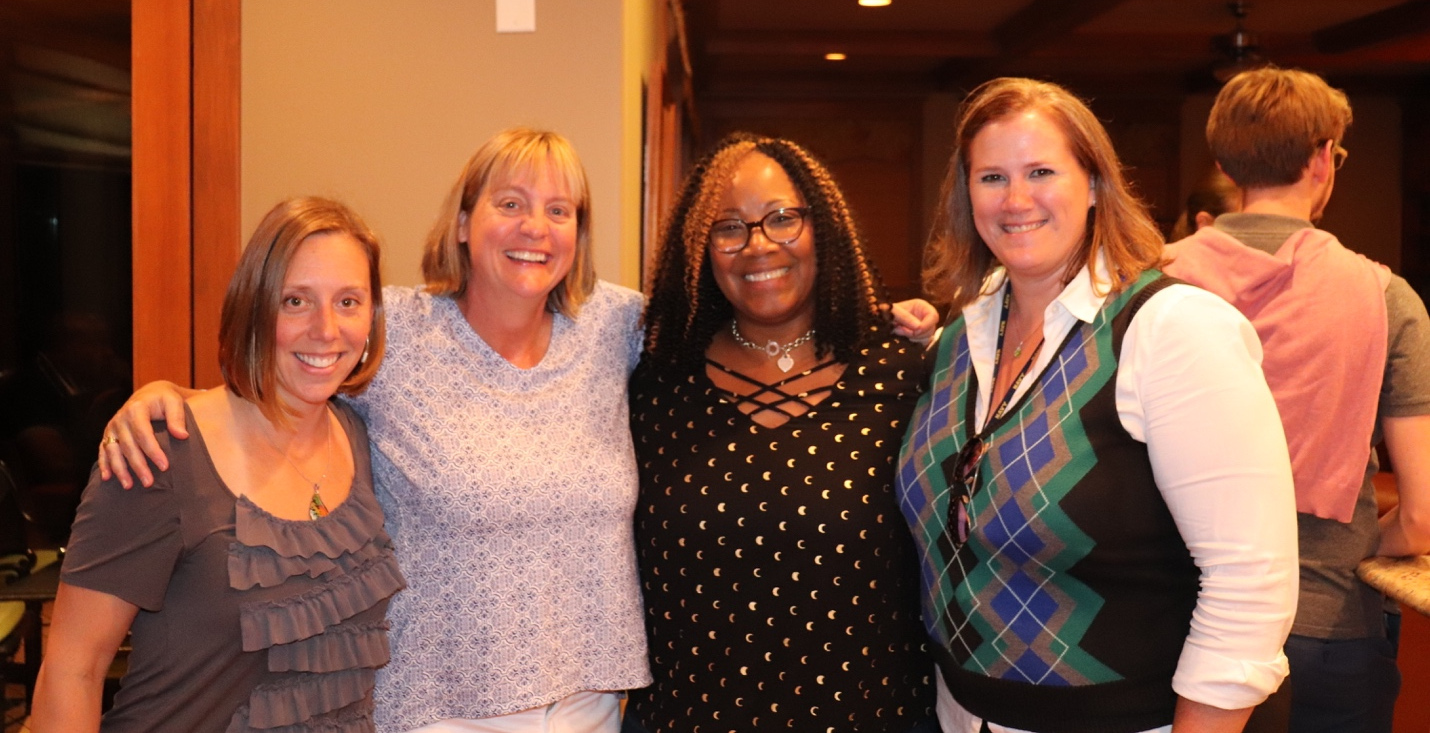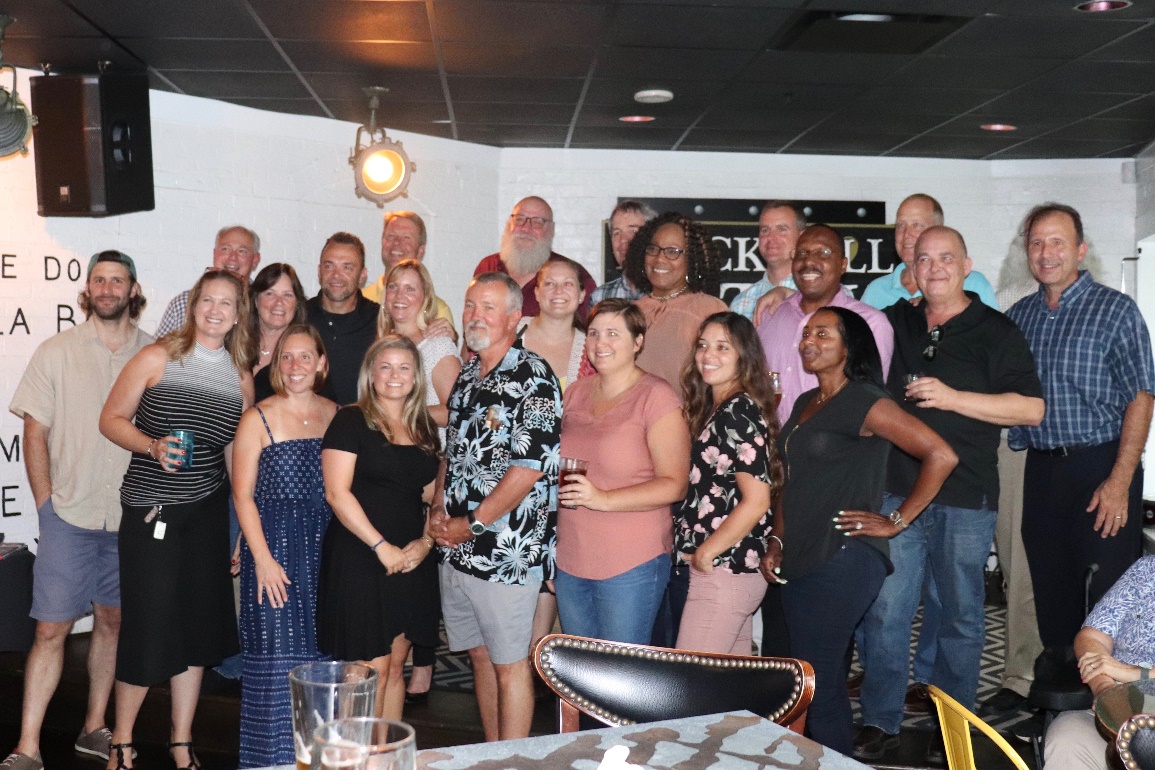L'Team - Featuring Jessica Thompson
Aug 12, 2020
While a robot may be the one visiting the Trojan asteroids, people are responsible for getting it there. In L’Team we meet some of the people that make the Lucy Mission possible.

What is your role on the Lucy team?
Lucy Project Systems Engineer. It is my job to holistically look at all of the interacting systems and subsystems on the Lucy spacecraft to make mission will meet the scientific and technical requirements, while managing schedule, cost, and risk.
Please describe the path you’ve taken to get here.
I have an undergraduate degree in physics from Salisbury University in Maryland. I also completed some master’s coursework in astronomy at the University of Maryland, College Park. Eighteen years ago, I started working as an electronics engineer at Wallops Flight Facility (WFF). At WFF, projects are typically shorter in duration and teams are somewhat smaller than those at Goddard and many of us end up taking on roles in additional disciplines. My first few years there, I served as a discipline engineer developing electronics, flight software and guidance navigation and control hardware and software. I worked on technology development payloads that flew on various orbital and suborbital vehicles. These included payloads on Falcon 1 and Minotaur I Expendable Launch Vehicles (Autonomous Flight Safety System (AFSS), TacSat-2 respectively), sounding rockets (AFSS), Uninhabited Aerial Vehicle (UAV guidance system) and balloon missions (Cosmic-Ray Energetics and Mass investigation (CREAM) and multiple self-proposed Director’s Discretionary Fund (DDF) student intern projects). I also supported development of an astronaut escape system for Orion spacecraft (Max Launch Abort System (MLAS)). In 2009, I transferred to Goddard Space Flight Center and directly into the Systems Engineering Education Development (SEED) program. The program helped me grow from a discipline engineer to a systems engineer. In 2010, I began working on the Magnetosphere Multiscale Mission (MMS) as the Deputy Fault detection and correction lead for the spacecraft and ~100 instruments. The other half of my systems role was dedicated to developing system level comprehensive performance tests, stacked vibration and shock tests for all four identical spacecraft and to serving as the RF systems engineering lead. After MMS launched in 2015, I began a four year journey supporting proposals as the deputy project systems engineer. The proposals included a Discovery proposal called the Deep Atmosphere Venus Investigation of Noble gases, Chemistry and Imaging (DAVINCI), a New Frontiers proposal called the Venus In Situ Composition Investigations (VICI), and two Heliophysics proposals called High-Energy Light Isotope eXperiment (HELIX) and Focusing Optics X-Ray Solar Imager (FOXSI). I joined Lucy as the Project Systems Engineer in April 2018.
What has been your favorite part of the mission?
My motivation on Lucy and at NASA comes from the purpose behind the work and the team working together to achieve a common goal. Lucy science has been one of my favorite parts of the mission; knowing we are contributing to understanding how the solar system formed definitely gets me up in the morning! I like being a part of the development of hardware and software to enable this amazing science.

What is your favorite Hal memory?
We organized a tie dying party at a bar in Boulder, CO where we stained shirts and socks and ironed the Lucy patches on them. Hal’s shirt still rocks the best design!
Best Lucy Team Memory?
Mike Donnelly’s retirement party. Mike was the Project Manager until July 2019. The inside joke from this party is hush-hush.

What Lucy challenges have you overcome? How have you done this?
We’ve had many technical challenges across the board, but we have processes in place for handling risks, failures and non-conformances. The more difficult aspects are getting the team to gel and trust one another. This takes time, strong coffee and lots of laughter. Setting the tone for the team environment has been a key focus for me as a leader
Please describe a time when a Lucy experience was most gratifying to you.
If I had to pick one day, it would be presenting to the review board during the Mission Critical Design Review (MCDR) in October 2019. It was exciting and humbling to represent the engineering team and the major undertaking of design work they have completed. This team is top notch and I’m proud to be a part of it.

Favorite cocktail and why?
Wild Child! About a year ago the team went to a bar after work and this delicious cocktail was on the menu (vodka, watermelon, mint, aloe liquor, rose, lemon juice, simple syrup and habanero salt on the rim). After ordering my 2nd one, the nickname emerged. I guess you could say it fits my personality, a little sweet and a bit more spicy! People might describe me as an extroverted engineer.